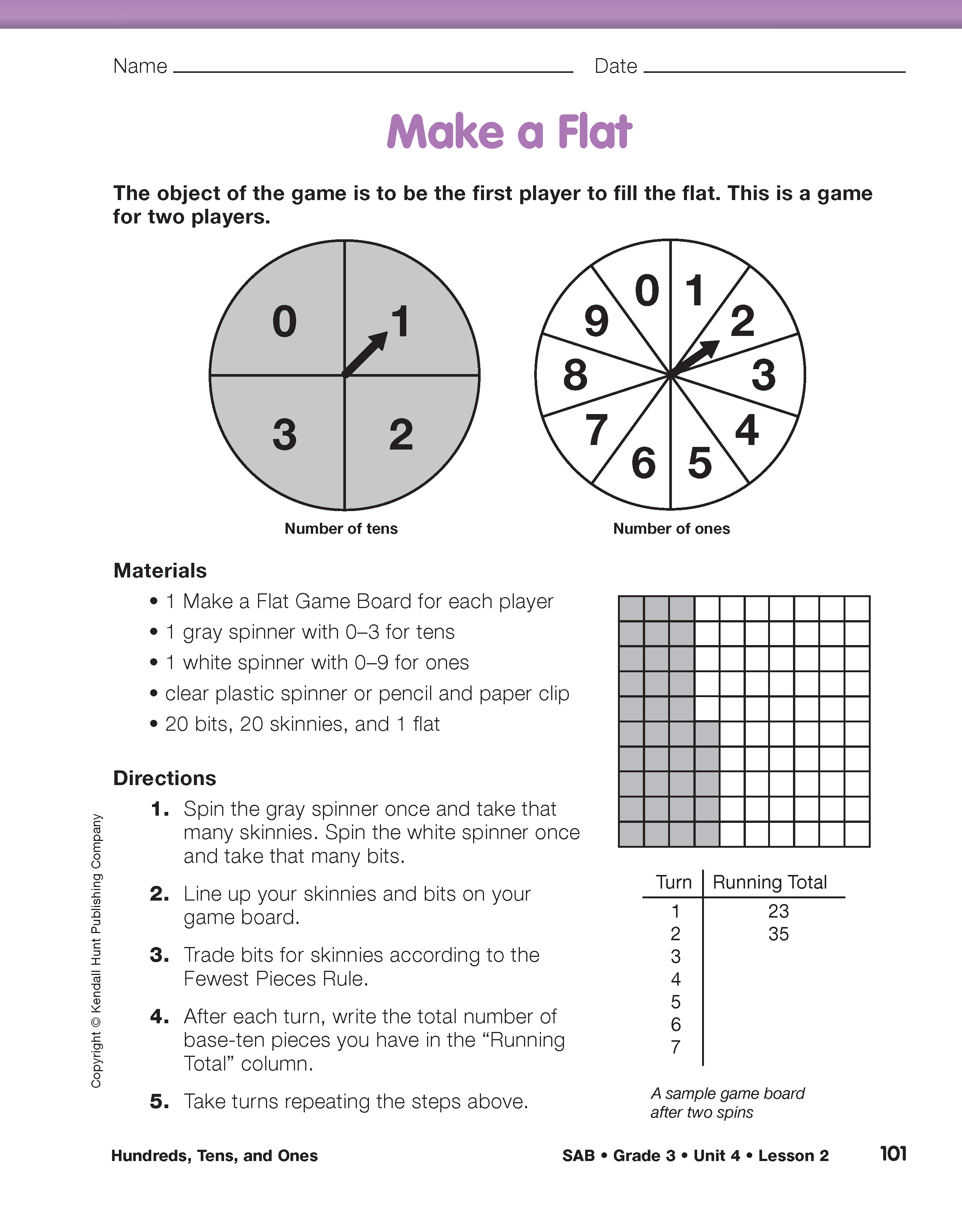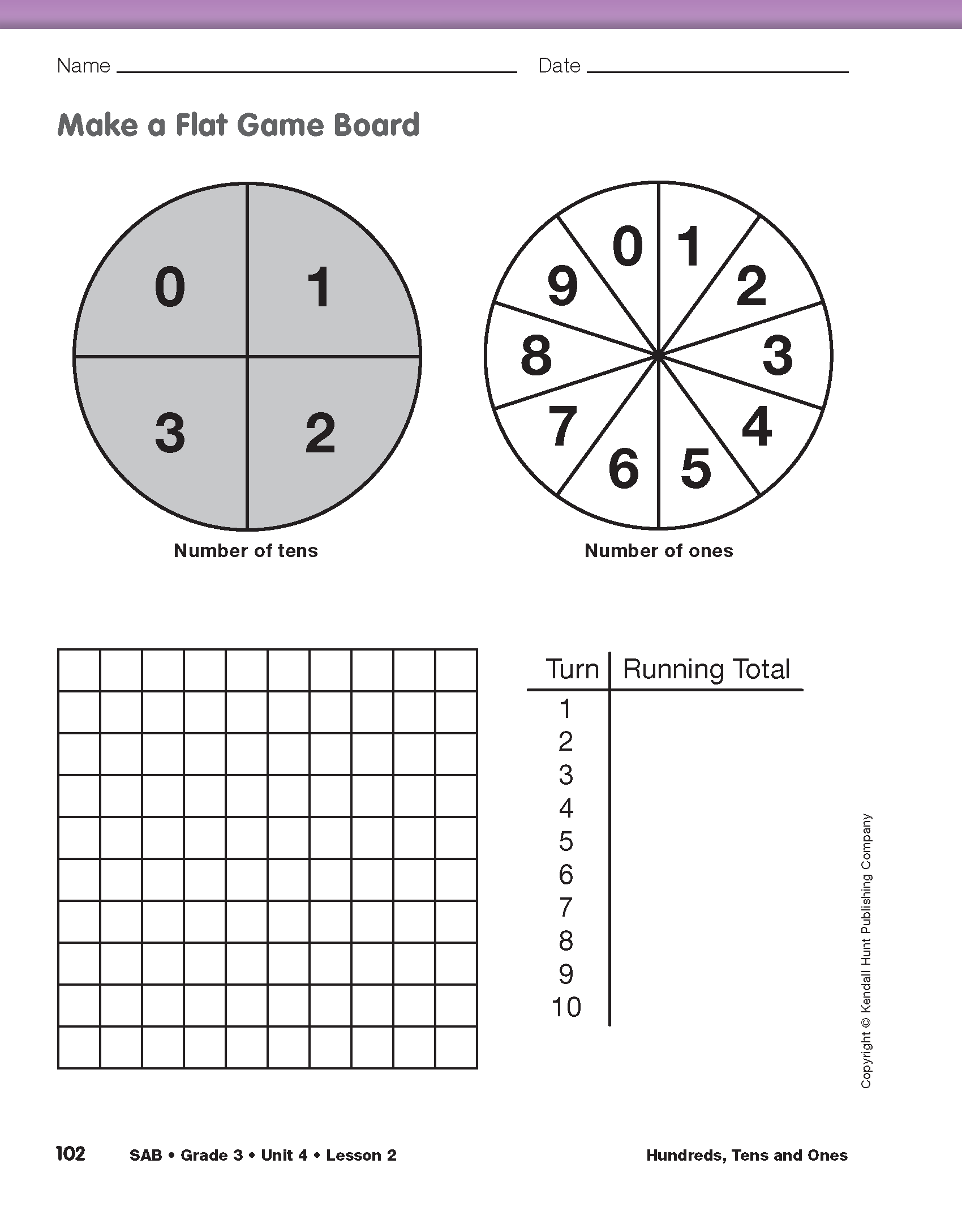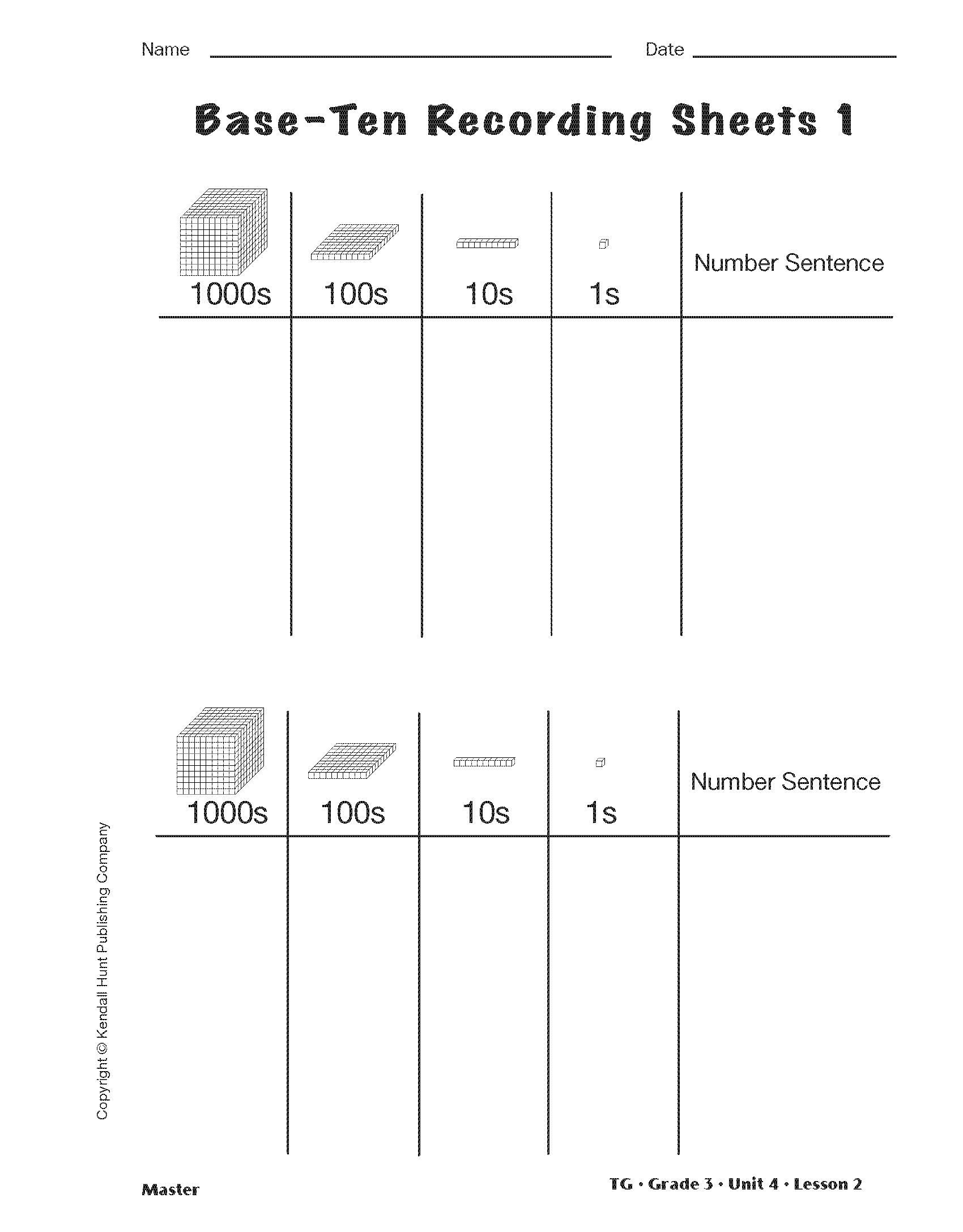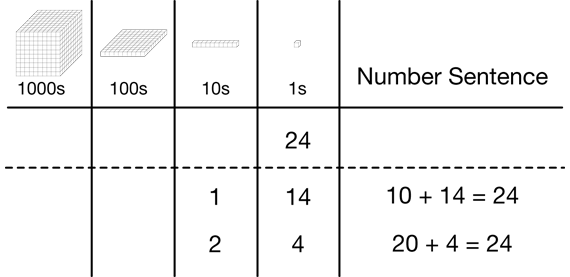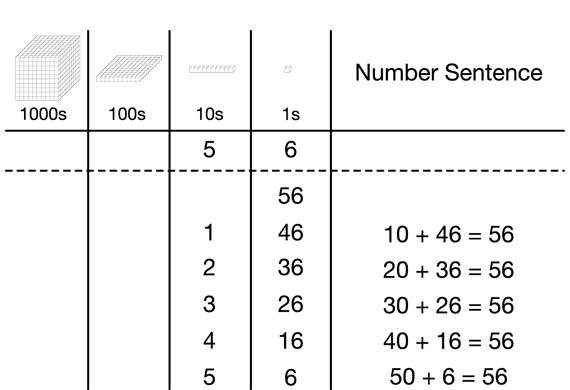Hundreds, Tens, and Ones
Est. Class Sessions: 2Developing the Lesson
Part 1. Group Chocos by 100s, 10s, and 1s
Trade Bits for Skinnies. Remind students of the TIMS Candy Company. This imaginary company is producing many more Chocos and has decided to use a more efficient set of blocks to keep track of them.
Distribute 50 bits (1 cm × 1 cm × 1 cm blocks), and 30 skinnies (1 cm × 1 cm × 10 cm blocks) per student pair. Tell students the bits will represent the individual Chocos, just as the connecting cubes did. The new set has a block to represent ten cubes already snapped together. This block is called a skinny.
Working with base-ten pieces differs from working with connecting cubes in that students must trade pieces instead of snapping cubes together. Explain that whenever students have ten bits, they can exchange them for one skinny.
Ask:
Display 24 bits and remind students that when they trade 10 bits for 1 skinny, they must be sure to take away the bits.
Ask them to model problems with bits and skinnies as you call them out.
For example:
Distribute copies of the Base-Ten Recording Sheets 1 Master. Record 24 bits on a display of the Base-Ten Recording Sheet Master. See Figure 1. Students should also record it on their recording sheets.
Ask:
Ask a student to model these amounts for the class and demonstrate trading 10 bits for 1 skinny. Have students record each model and write number sentences to show the partitions on their recording sheets. See Figure 1.
Ask volunteers to name other two-digit numbers and have students show them with their base-ten pieces.
For example, display 5 skinnies and 6 bits and ask:
Observe students as they make trades and model different partitions of each number. Figure 2 shows six possible partitions of 56. Students can record them in any order, and it is not essential for every student to find all the partitions. They should write number sentences to show their partitions.
Play Make a Flat. Distribute 1 flat (1 cm × 10 cm × 10 cm blocks) to each student.
Ask:
Students will play Make a Flat to reinforce the concept that they can trade 10 bits for one skinny and that there are 10 skinnies in a flat. Ask students to follow the game directions on the Make a Flat pages in the Student Activity Book as you demonstrate several rounds with a Make a Flat Game Board display. In this game, students spin to determine a number of bits and skinnies (ones and tens) to place on their Make a Flat Game Board. The first player to fill a flat is the winner.
Organize pairs to play Make a Flat. Each student should have 20 bits, 20 skinnies, and 1 flat to ensure that students make frequent trades.
After students have played several rounds of the game, ask:
Distribute the remaining flats so that student pairs have 14. Pose several questions that ask students to find equivalent representations of numbers with base-ten pieces.
For example, ask:














